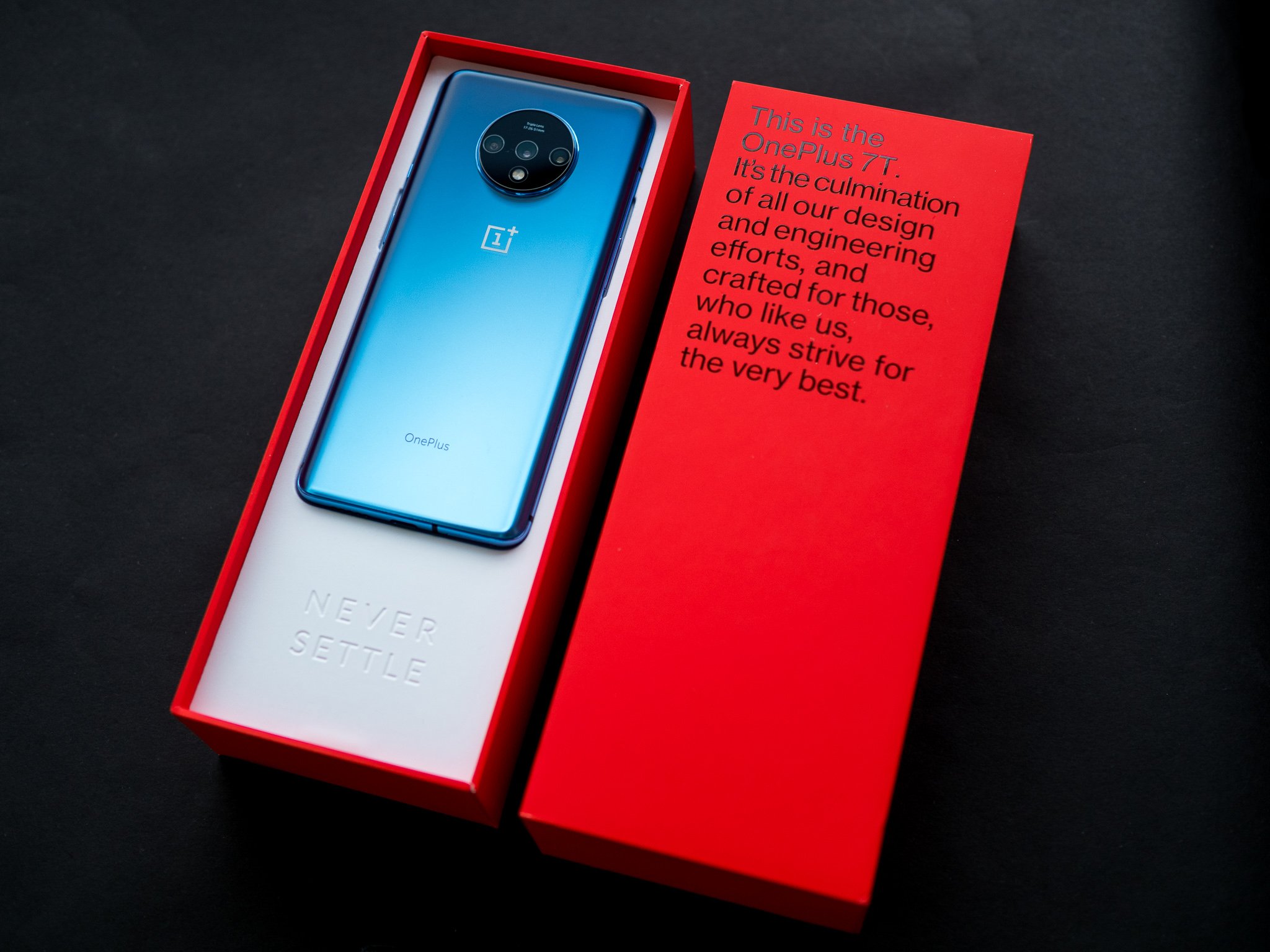Android Central Verdict
Bottom line: The OnePlus 7T brings the best feature from the OnePlus 7 Pro to a more mainstream audience. The 90Hz panel is a fantastic addition, and you get the latest internal hardware, Android 10 out of the box,30W fast charging, and a 48MP camera that takes great photos. That's fantastic value when you consider the OnePlus 7T costs just ₹37,999.
Pros
- +
Stunning 90Hz display
- +
Outstanding hardware
- +
Clean software with Android 10
- +
Great haptics
- +
Quick updates
Cons
- -
Buggy software
- -
Average battery life
- -
No headphone jack
- -
No water resistance
Why you can trust Android Central
OnePlus has gone from strength to strength in India over the last two years. It overtook Samsung to become the largest player in the premium category, and it hasn't looked back after that. A large part of the brand's success in the Indian market is down to the hardware, but what makes it truly stand out is the software: OxygenOS is the best third-party Android skin, and it continues to get even better over time.
This year saw an interesting change in the manufacturer's strategy: it introduced the OnePlus 7 Pro with a 90Hz display, 48MP camera, and all-screen design with a retractable camera module for ₹48,999 ($690). Meanwhile, the standard OnePlus 7 offered a minor upgrade over the 6T while retaining most of the same hardware.
As is often the case with OnePlus, we're now seeing a refresh to the OnePlus 7 just five months after the phone went on sale. The OnePlus 7T follows OnePlus' release cadence for its T refresh in that it looks similar to the OnePlus 7, but it has more in common with the OnePlus 7 Pro. The 7T also has a 90Hz display, and comes with a Snapdragon 855+, significantly better haptics, and Android 10 out of the box.
The OnePlus 7T Pro is also official now, with a few minor tweaks over the 7 Pro. But here's why you should consider the OnePlus 7T if you're in the market for a new phone.
About this review
I'm writing this review after using the OnePlus 7T for three weeks in Hyderabad, India. The phone was connected to Jio's 4G network for the duration of the review period. The phone came with OxygenOS 10.0.HD65AA build based on Android 10 out of the box, and picked up a sizable update to OxygenOS 10.0.3HD65AA on October 1.
OnePlus 7T Design and hardware
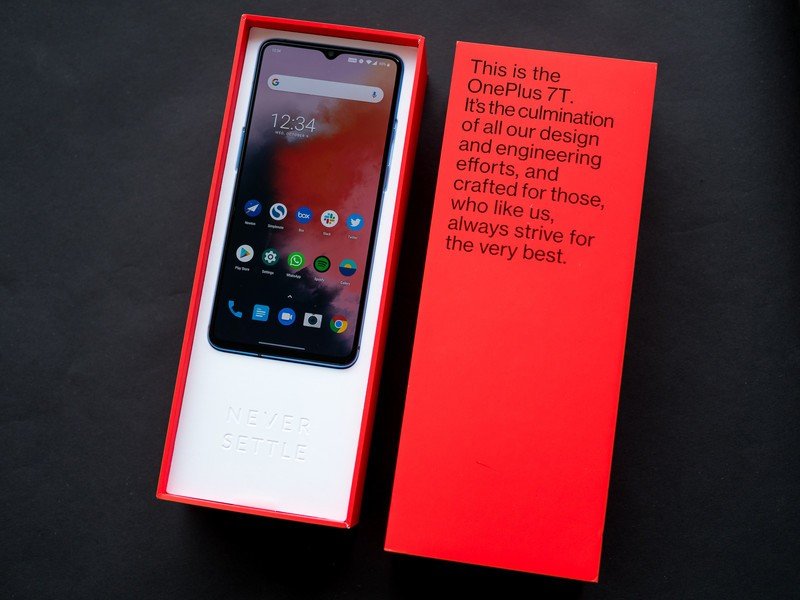
The OnePlus 7T is a combination of three phones: the design at the back is identical to the OnePlus 7 Pro, the front looks a lot like the OnePlus 7, and the rear camera housing is reminiscent of the Lumia 1020 (has it already been six years?). That camera housing in particular allows the phone to stand out, but the sensor hardware itself is unchanged from the 7 Pro.
The OnePlus 7T comes in a Glacier Blue hue that's a few shades lighter than the Nebula Blue on the 7 Pro. Other than that, it has the same frosted glass finish that makes it comfortable to hold, and the same subtle curves along the sides. There's a USB-C charging port at the bottom, the primary speaker sits to its right, and the SIM tray — which holds two SIM cards — is on the left. There's no 3.5mm jack, but the grille at the top of the display doubles up as a secondary speaker, and you get excellent stereo sound.
The alert slider continues to be a mainstay on OnePlus phones, and it's located on the right side of the phone — just above the power button. The volume rocker sits to the left, and there's an in-display sensor to unlock the phone. You also get face unlock, but that's not as fast as the in-screen reader.
If I don't seem all that excited about the design, it's because there really isn't anything new here aside from the camera housing. But what I do like is the fact that the 7T has a flat display.
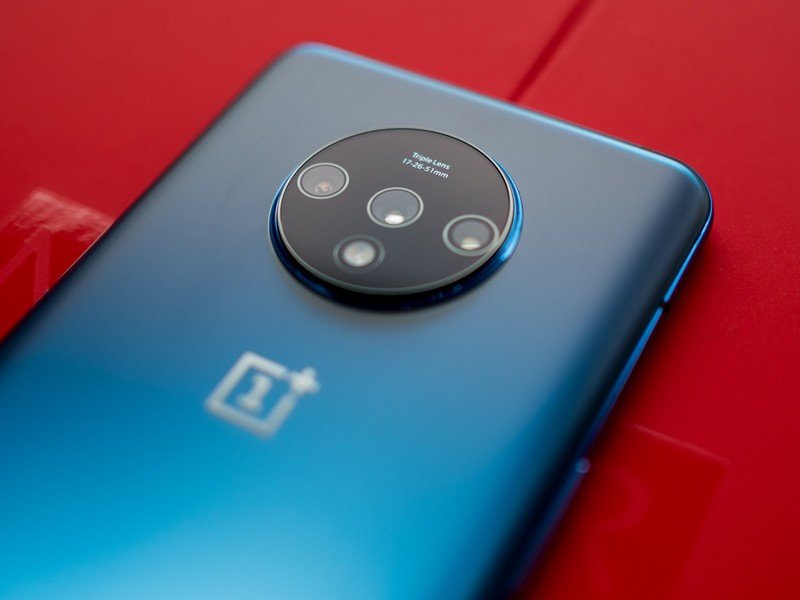
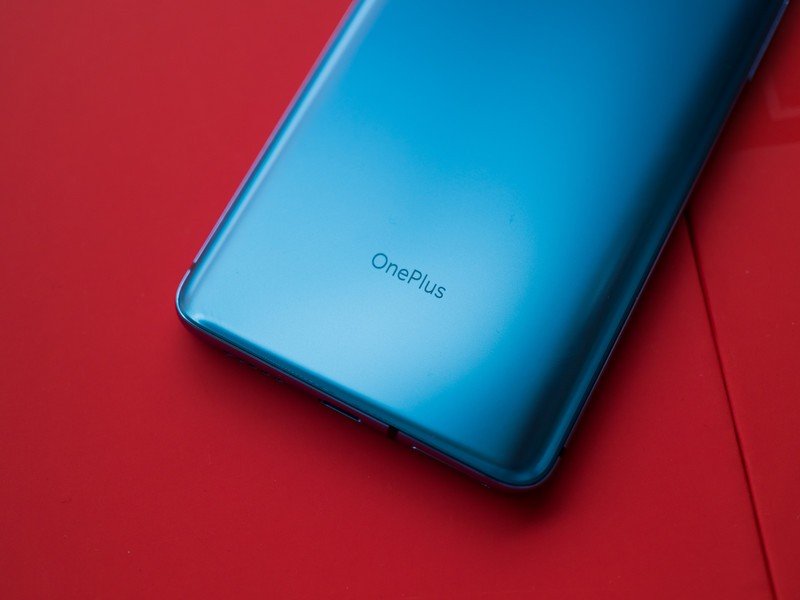
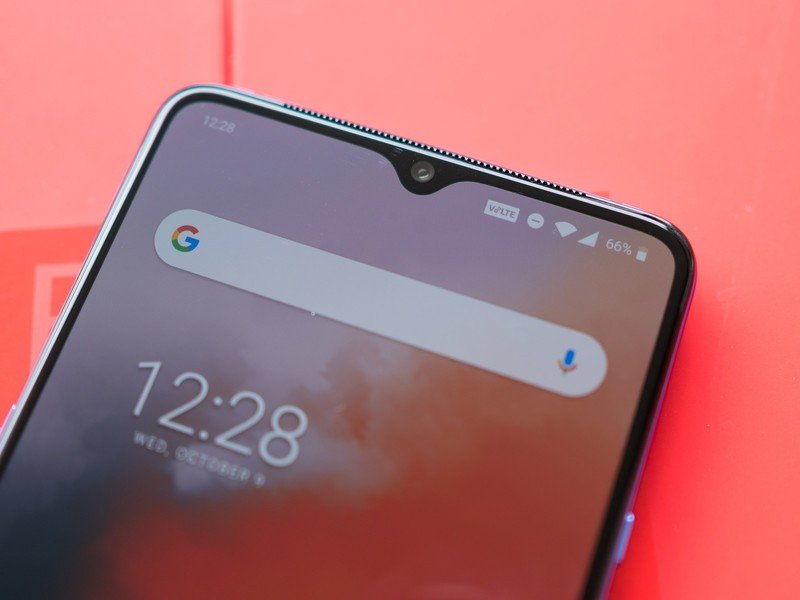
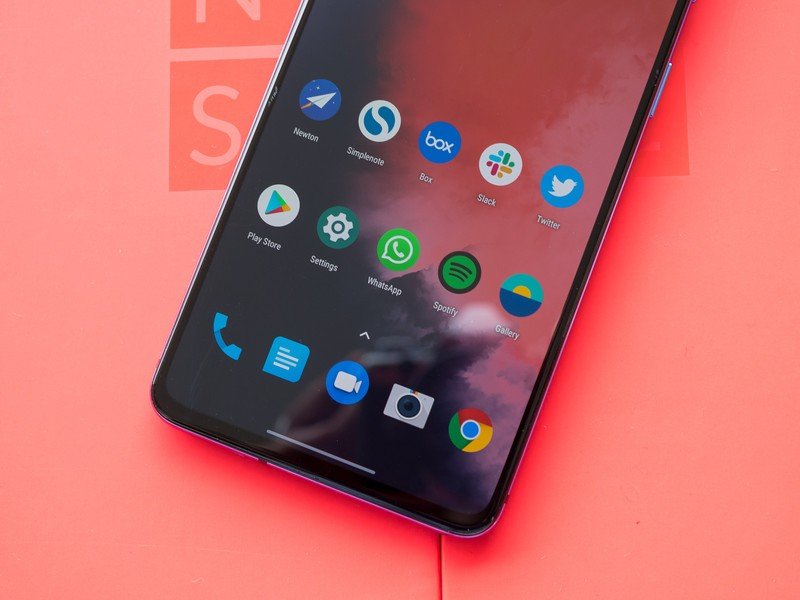
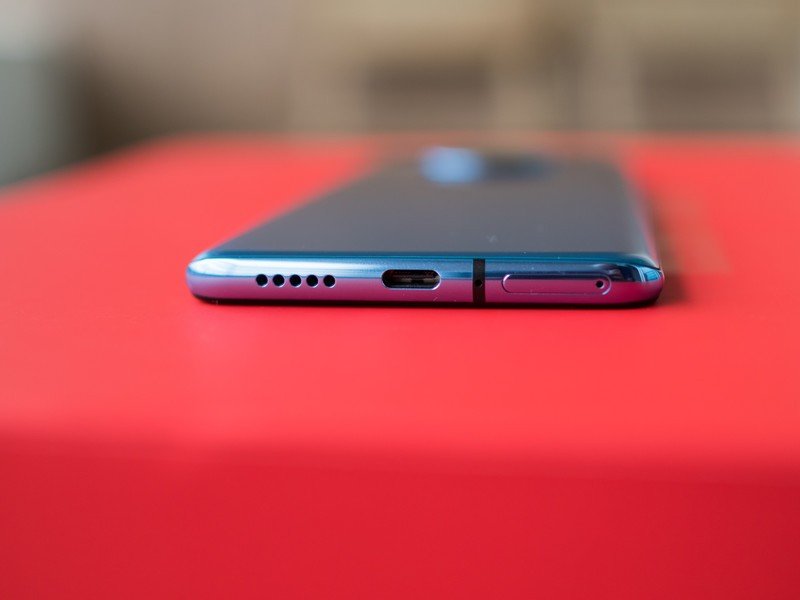
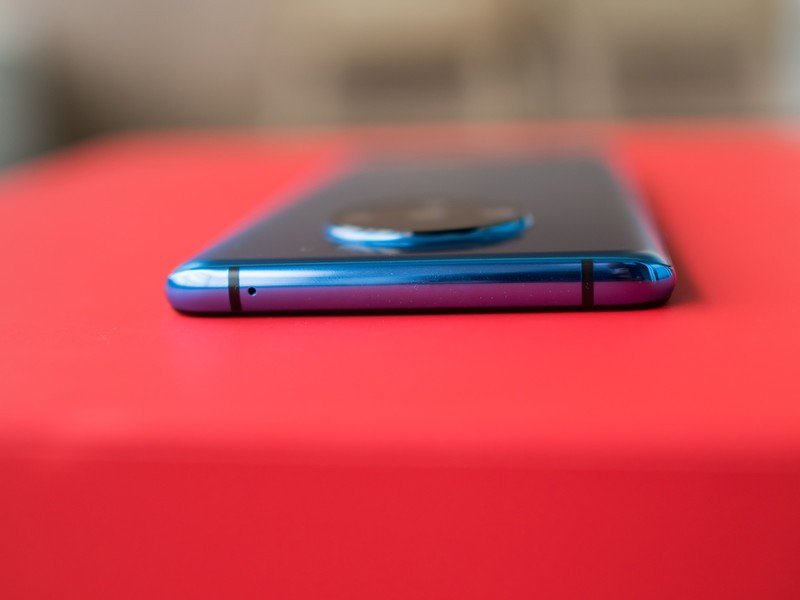


OnePlus introduced a 90Hz display with the 7 Pro, and it is bringing the feature over to the "regular" model with the 7T. But because there needs to be a differentiation between both devices, there are a few changes here: first up, the panel on the 7T is FHD+ (2400x1080) and not QHD+ (3120x1440) like the 7 Pro. Then there's a cutout at the top, so you don't get that all-screen design as the 7 Pro. But on the plus side, the display itself is flat with no curves on either side, and that's a big win when it comes to usability.
The same excellent 90Hz refresh rate, but on a more usable flat display.
One of my main issues with the OnePlus 7 Pro was its sheer size — it was too tall, heavy, and the dual curved screen led to a lot of accidental touches and made it unweildy. The 7T, on the other hand, is much more manageable thanks to the flat display, and the weight is reduced by 16g. The cutout at the top doesn't bother me, and for what it's worth OnePlus says it is 31.46% smaller than the notch on the OnePlus 7.
Coming to the panel itself, the 6.55-inch Fluid AMOLED display is now at a 20:9 ratio — making the phone narrower and taller — and the screen goes up to 1,000 nits brightness. That claim doesn't measure up in real-world usage scenarios, but you shouldn't have any issues with sunlight legibility even under harsh conditions. The panel itself has vibrant colors and excellent black levels, and the fact that it's just an FHD+ panel doesn't make it any less great.
You also get stereo sound on the OnePlus 7T, with the grille up top serving as the secondary speaker. You get an impressive amount of sound, and it's well-balanced too. Watching movies and playing games is a delight on the 7T, and with the phone sporting the same vibration motor as the OnePlus 7 Pro, you get excellent haptics. This is an area where most Android phones fall short, but OnePlus has managed to turn things around this year.
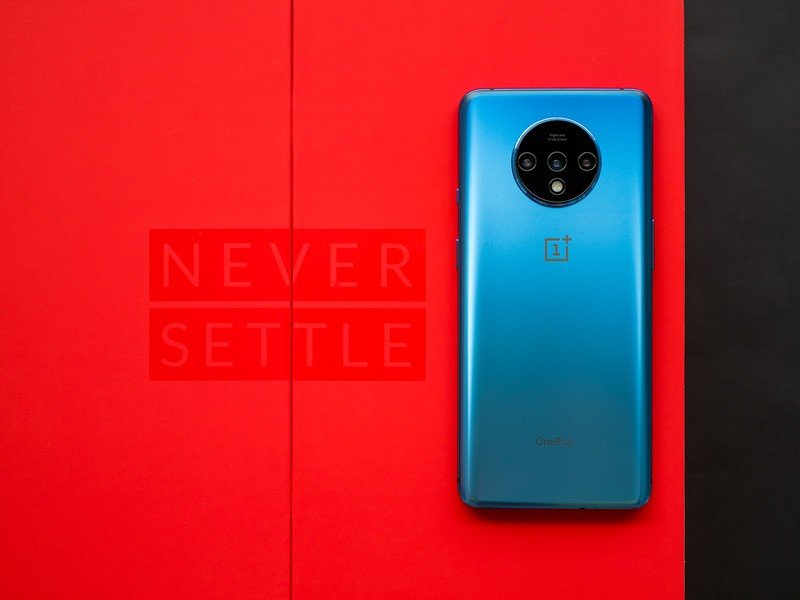
Internal hardware is an area where you'd expect the OnePlus 7T to excel, and it does just that. The phone is powered by Qualcomm's latest Snapdragon 855+ chipset, and you get 8GB of RAM as standard along with 128GB of storage.
| Specs | OnePlus 7T |
|---|---|
| Software | Android 10 |
| Display | 6.55-inch (2400x1080) 90Hz Fluid AMOLED |
| Chipset | 2.96GHz Snapdragon 855+ |
| RAM | 8GB |
| Storage | 128GB/256GB |
| Rear Camera 1 | 48MP, ƒ/1.6 |
| Rear Camera 2 | 12MP, ƒ/2.2 |
| Rear Camera 3 | 16MP, ƒ/2.4 |
| Front Camera | 16MP, ƒ/2.0 |
| Security | In-display fingerprint |
| Battery | 3800mAh, 30W |
| Connectivity | Wi-Fi 802.11 ac, BT5.0 |
| Colors | Frosted Silver, Glacier Blue |
| Dimensions | 160.9 x 74.4 x 8.1mm |
| Weight | 190g |
Like the 7 Pro, the 7T comes with LPDDR4X RAM and a UFS 3.0 storage module. You also get Wi-Fi ac, Bluetooth 5.0, AptX HD, NFC, and a 3800mAh battery with 30W fast charging. There really isn't anything missing here in terms of core features — aside from a 3.5mm jack — and while wireless charging or water resistance would have been nice to have, they would've driven the price up. Judging by the way OnePlus is going, we'll likely see these additions in the next launch cycle.
The Snapdragon 855+ in combination with the 90Hz display makes everything fly. Honestly, you have to use the 7T next to a standard 60Hz phone to see how much faster everything feels. You immediately notice the difference while scrolling text, browsing through social media apps, and playing the few games that work at 90fps. OnePlus says it optimized animations on OxygenOS 10 to take full advantage of the high refresh rate, and that's evident once you start using the 7T.
On the battery side of things, the 3800mAh battery was more than adequate to last an entire day's worth of use. There wasn't an instance where I was worried about the phone running out of charge before the end of the day, and I routinely averaged five hours of screen-on-time over the course of a day. The FHD+ panel makes things slightly more manageable in terms of battery life, and when you do need to top up you get Warp Charge 30T. It still charges over 30W, but it is able to deliver 30W charging speeds for longer, allowing the 7T to charge from flat to 100% in under an hour.
OnePlus 7T Software
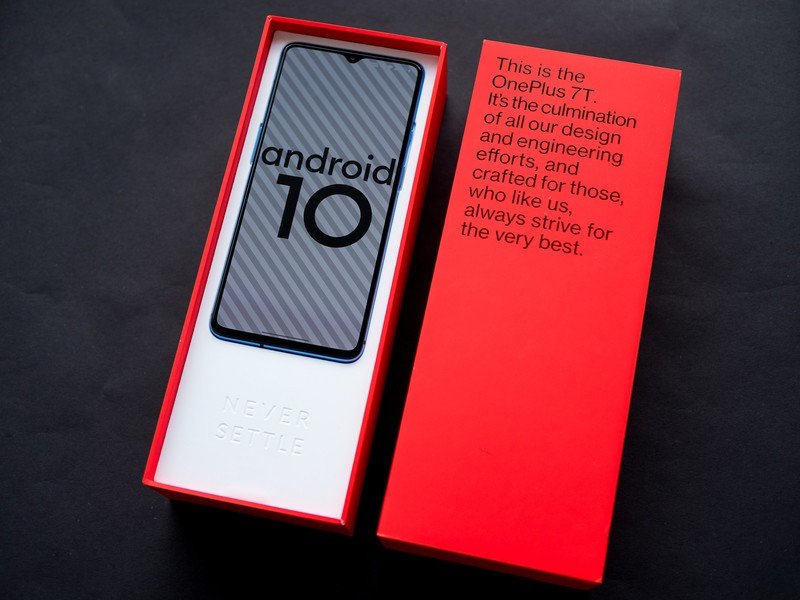
Software has defined OnePlus' success story in India. There isn't another manufacturer that has managed to emulate what OnePlus has done on the software front, and while you get clean Android on Nokia and ASUS phones, what makes OxygenOS different is customizability.
OxygenOS continues to strike the ideal balance between simplicity and customization.
Right now, there are two flavors of software you can get with your phone: you can either choose to go with an Android One phone, which lacks any semblance of customizability, or go with a myriad of Chinese ROMs that offer too much of it. As I've said over the last two years, OxygenOS strikes the ideal balance — the interface itself is clean and devoid of any bloat, but you still get several customization options should you need them.
That's particularly true for the Indian market, with OxygenOS picking up a host of new features tailored for the country. The SMS app filters spam texts, you get real-time cricket scores, and Zen Mode from earlier this year is getting even better. You'll now be able to set timers from 20 to 60 minutes, and during that time you won't be able to access your phone other than receiving calls and using the camera.
OnePlus owners in India get to use new OxygenOS features ahead of everyone else.
Work-Life Balance is another India-exclusive feature, but that's yet to make its debut — it was scheduled to launch in July, but it was pushed back. OnePlus Roaming is similarly delayed, with the feature allowing you to easily pick a data-only plan when going abroad. OxygenOS 10 comes with a system-wide dark theme that works with a wide variety of apps, or you can manually set accent colors, tones, and install new icon packs directly from the settings. The dynamic backgrounds now feature longer animations that add a certain flair to the home screen. OnePlus also offers full-screen navigation gestures akin to Google's implementation, but it is more refined. If you're not a fan, you can switch back to the older three-button layout.
OnePlus is also rolling out a photo storage service for users in India, dubbed OnePlus Cloud Gallery. The feature is set to go live sometime later this year, but it gives OxygenOS users the ability to seamlessly back up their photos and videos to the cloud. OnePlus is giving 50GB of cloud storage for free, but we'll have to wait and see how much the plans cost and where user data is stored. There's no shortage of cloud storage services, so it isn't immediately clear why OnePlus is getting into this category. It is possible the brand is looking at this as a long-term play — more and more manufacturers are getting into services — so it'll be interesting to see where this leads.
It's a big win for OnePlus to be able to roll out the 7T with Android 10 out of the box. What that essentially means is that you'll get two further platform updates — ideally to Android 12 — and security updates until the end of 2022. OnePlus has done a fantastic job with updates this year, but it hasn't been smooth sailing all the way. There were numerous software bugs out of the box on the 7T — the Android share intent just didn't work for me — but the update to OxygenOS 10.0.3 fixed those problems.
OnePlus 7T Camera
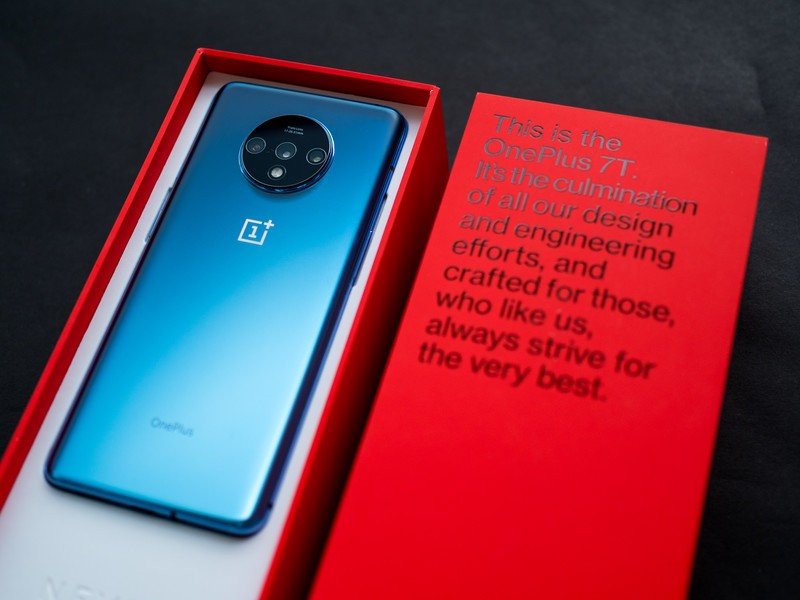
OnePlus has shown that it is able to deliver capable cameras, and in this area there's little change from the 7 Pro. The 7T has a similar sensor array, with a 48MP primary camera joined by a 16MP wide-angle lens and a tweaked 8MP zoom lens that has 2x optical zoom.

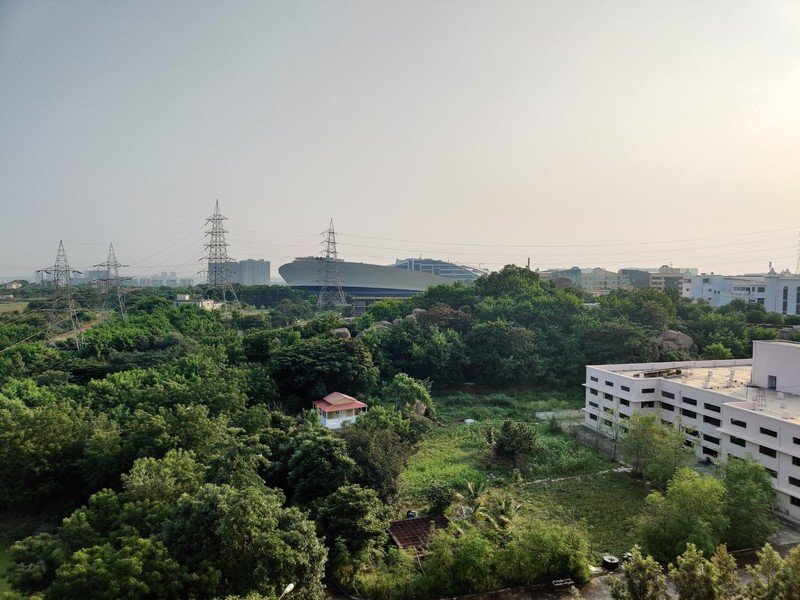
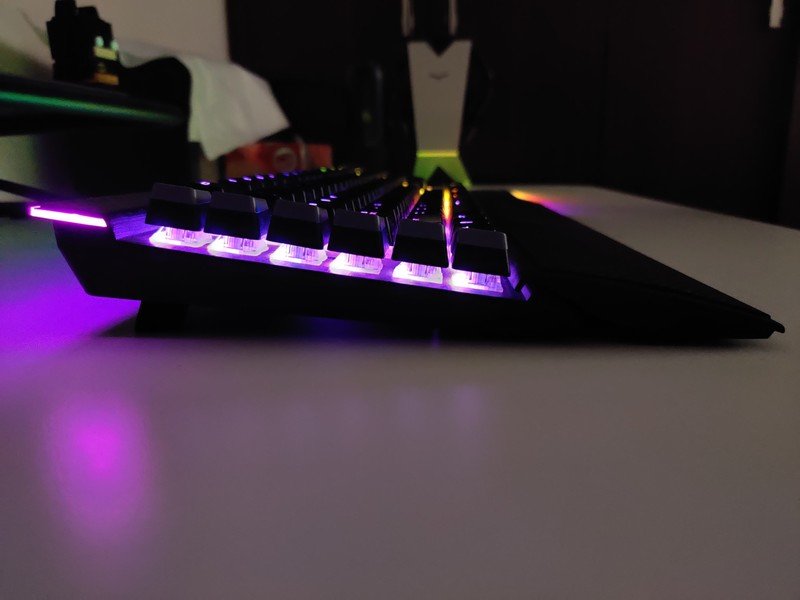


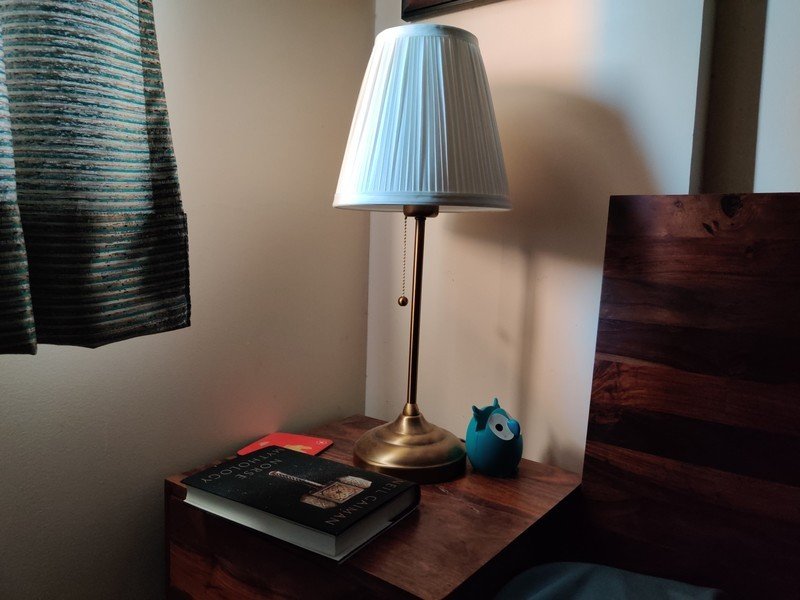
The camera interface itself hasn't changed, nor has the final photo quality. You still get great shots in daylight conditions, and the phone starts to struggle in artificial lighting. But that old OnePlus caveat still holds good here: for what you pay for the 7T, the camera is plenty good.
Sure, it isn't going to beat what Google or Samsung have to offer in this area, but it doesn't have to. It only needs to do better than ASUS and Xiaomi, and OnePlus has managed to do that.
OnePlus 7T Should you buy it?
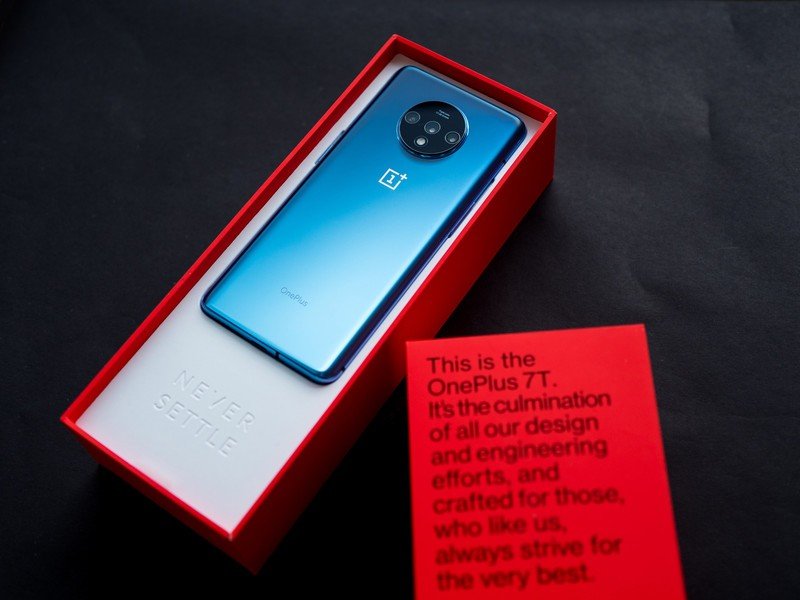
If you're in the market for a phone with stellar value and standout hardware, the OnePlus 7T is the default choice. It has the same 90Hz refresh rate as the OnePlus 7 Pro but you don't have to put up with a curved screen. The design also looks better thanks to the prominent camera housing at the back, the 48MP camera takes great shots, and you get the versatility of a wide-angle and zoom lens.
There's also a Snapdragon 855+ under the hood, 8GB of RAM as standard, and 30W fast charging. Then there's the fact that the phone is launching with Android 10 out of the box, with OxygenOS getting a host of features tailored for the Indian market. Combine all of that and you get a standout package.
The ASUS 6z and Redmi K20 Pro are strong contenders, but the OnePlus 7T wins out because of the 90Hz display and Android 10.
This year has been particularly busy in India's smartphone segment, with dozens of new products making their debut. Right now, you'll find plenty of great options at any given price point, and there has never been a better time to be in the market for a new phone.
The ASUS 6z immediately comes to mind here: the phone also has similar hardware, clean Android interface, and is available for just ₹35,999 ($505). You get a beefier 5000mAh battery that lasts longer, the same 8GB of RAM, and 256GB of internal storage. The Redmi K20 Pro continues to be a great option as well. Sure, MIUI has its set of issues, but at just ₹30,999 ($435) for the 8GB/256GB variant you're getting excellent value. Both the K20 Pro and the ASUS 6z have a 3.5mm jack as well.
So what exactly are you getting with the OnePlus 7T here? The 90Hz display, and Android 10 out of the box. The 90Hz panel in and of itself is worth the premium over the ASUS 6z, but what ultimately sells the 7T is the software. By launching the phone with Android 10 out of the box, OnePlus is guaranteeing platform updates for Android 11 and Android 12, and that's one more than what you get from both ASUS and Xiaomi.
The OnePlus 7T is available with 8GB of RAM and 128GB of storage for ₹37,999 ($535), and a 256GB option for ₹39,999 ($560). Considering the minor difference in cost between the 128GB and 256GB variants, you're better off springing for the latter.
4.5 out of 5
The OnePlus 7T may not have the same battery life or value as its peers, but it ultimately wins out thanks to that stunning 90Hz display and OnePlus' advances on the software front. And that makes it one of the best phones in the premium category today.
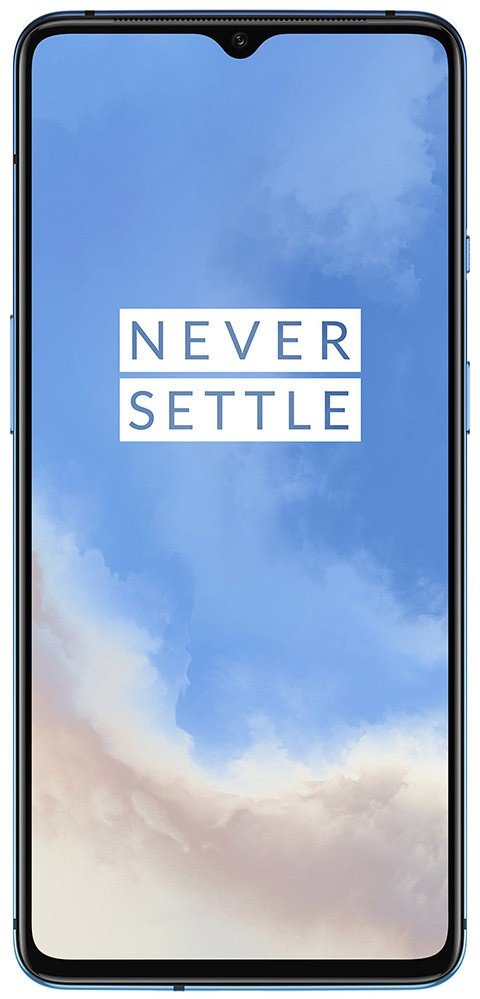
Making the 90Hz display more accessible.
The OnePlus 7T brings the best feature from the OnePlus 7 Pro to a more mainstream audience. The 90Hz panel is a fantastic addition, and you get the latest internal hardware, Android 10 out of the box,30W fast charging, and a 48MP camera that takes great photos. That's fantastic value when you consider the OnePlus 7T costs just ₹37,999.

Harish Jonnalagadda is Android Central's Senior Editor overseeing mobile coverage. In his current role, he leads the site's coverage of Chinese phone brands, networking products, and AV gear. He has been testing phones for over a decade, and has extensive experience in mobile hardware and the global semiconductor industry. Contact him on Twitter at @chunkynerd.
